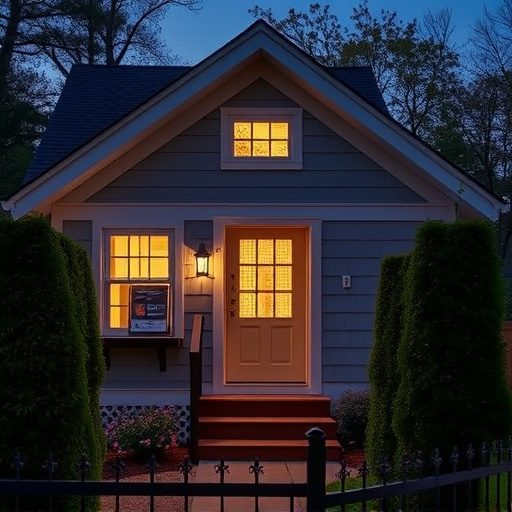DIY home alarms powered by Z-Wave technology offer a cost-effective, flexible security solution for homes and properties. This wireless protocol enables the integration of various security devices, allowing homeowners to customize their alarm systems while monitoring remotely via smartphone apps. Compatible sensors and controllers, available online or in stores, form a network that covers every part of the home, providing advanced protection with efficient power consumption.
“Enhance your home’s security with the power of DIY and Z-Wave technology. This innovative, wireless protocol revolutionizes traditional home alarm systems, offering a smart and efficient solution for homeowners seeking peace of mind.
In this article, we’ll guide you through the benefits of integrating Z-Wave into your DIY home alarms, from remote monitoring to seamless automation. We’ll also provide a step-by-step setup process, ensuring you can securely transform your house into an intelligent fortress.”
Understanding Z-Wave Technology for Home Security
Z-Wave technology is a wireless communication protocol designed for smart home applications, making it a popular choice for DIY home security systems. This low-power, long-range radio frequency (RF) technology allows devices to communicate with each other over relatively large distances, ideal for securing expansive homes or properties with multiple structures. By using Z-Wave, you can create interconnected networks of sensors and control panels, enabling remote monitoring and control of your home’s security.
One of the key advantages of Z-Wave in DIY home alarms is its ability to support a wide range of devices and integrations. From door and window sensors to motion detectors, glass break detectors, and even smart locks, these components can all communicate with each other and be controlled via a central hub or smartphone app. This flexibility allows homeowners to tailor their security systems precisely to their needs, enhancing peace of mind and providing advanced protection for their properties.
Benefits of DIY Home Alarms with Z-Wave Integration
DIY home alarms equipped with Z-Wave technology offer a plethora of benefits for homeowners looking to enhance their security. This innovative integration allows for a customizable and flexible system, enabling users to design a layout that perfectly suits their living space. By utilizing wireless communication, Z-Wave enables seamless connection between various devices, such as door/window sensors, motion detectors, and smart locks, creating an integrated network that provides comprehensive protection.
One of the key advantages is its ease of installation and do-it-yourself (DIY) nature, making it accessible for homeowners to set up without professional assistance. This not only saves costs but also gives users full control over their security setup. Additionally, Z-Wave technology ensures efficient power consumption, as devices communicate wirelessly, reducing battery drain concerns. Homeowners can remotely monitor and control their alarms via smartphone apps, providing peace of mind and the ability to respond swiftly to potential threats.
Setting Up Your Own DIY Z-Wave Home Security System
Setting up your own DIY Z-Wave home security system is an accessible and cost-effective way to enhance your home’s safety. This technology allows you to create a smart, interconnected network of devices that monitor and secure your property. The process begins with acquiring compatible Z-Wave sensors and controllers, which can be easily found online or in electronics stores. These components communicate wirelessly, forming a network that covers every corner of your home.
Once you’ve gathered the necessary equipment, installation is straightforward. Each sensor, such as door/window contact sensors, motion detectors, and glass break sensors, is strategically placed to monitor potential entry points. The Z-Wave controller acts as the central command center, receiving signals from these sensors and triggering alarms or notifications when triggered. With a few simple configurations and connections, you’ll have a comprehensive DIY home alarm system tailored to your specific needs.
